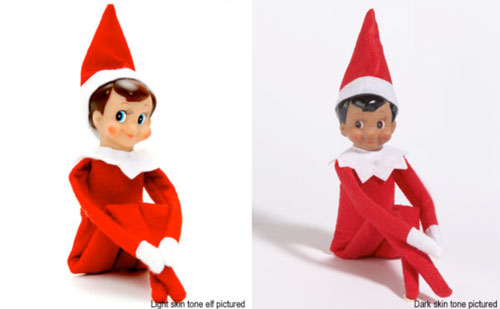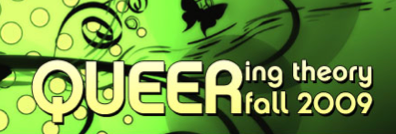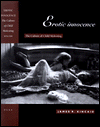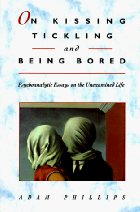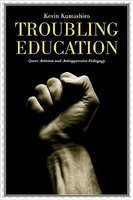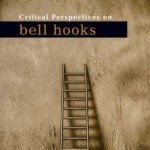I am very pleased to welcome Kandace Creel Falcón to the trouble blog! When she told me about the Elf on the Shelf and its connection to Foucault’s panopticon, I knew the topic would be great for my blog (especially considering my interest in children and the link between regulation, discipline and moral education). Kandace is a fellow blogger (check out her amazing blog, La Kitchen Chicana), so I asked her if she would write about it. The following are her brilliant ruminations:
It’s not very often that I am able to read Foucault for pleasure, and for that I must thank the wonderful scholar blogger, Dr. Sara Puotinen. To me, theory is only relevant when it can be applied to one’s own life, and so when I had a revelation when becoming acquainted with “the new holiday tradition” of the Elf on the Shelf that it actually is a representation of Foucault’s panopticon I just could not help but scream it from the rooftops for all to hear. When Sara asked me to do a guest blog on the subject I was more than happy to, because as she notes, troublemaking takes many forms and I have a hunch that my thoughts on Elf on the Shelf (and even the great Santa Claus) might cause some “trouble” for those who hold these figures of surveillance dear.
“The Elf on the Shelf is watching you…”
**Scream**
Let me take you back to the beginning of this story, last year one of my high school friends who is married with two children started photographing this skinny elf around her house in different positions and places. She called him “Eddy Peppermints” and I thought to myself, that’s cute, I wonder where she came up with that idea. I wasn’t surprised then when this Christmas rolled around Eddy re-emerged causing more mischief in her house for her boys. It was when I spotted the “Elf on a Shelf kit” at the Highland Park Barnes and Noble that things began to take a dark turn.
When I picked up the Elf on the Shelf I realized that my friend had not simply made this up herself, but rather she was ahead of the Elf on the Shelf explosion where the Elf began showing up everywhere! (My chiropractor in between back adjustments exclaimed to me that her kids just love their little elf!) But what became the most alarming was the description on the back of the box detailing exactly how the Elf on the Shelf should function as your very own new family, Christmas tradition. I’m not sure if this exactly what the back of the box reads, but this is what you can find on the official Elf on the Shelf website.
From My Family to Yours,
This charming tradition began for our family when my children were very small. Like most children through the ages, they wanted to know how Santa really knew who was naughty or who was nice. Their answer, as in my own childhood, came in the form of a small pixie-elf.
The first time the elf arrived at our home, my children officially adopted him by giving him a name. Each year he would arrive around the holidays, usually at Thanksgiving. His sole responsibility was to watch the children’s behavior and report it to Santa each night. The next morning after the children awoke, they discovered the elf had returned from the North Pole and was now resting in a new and different place. My children would race each other out of bed to try and be the first to spy him in his new position.
Over the years the tradition was perfected and rules were introduced. For example, to better preserve his mystique the children were not allowed to touch him but talking to him was a different matter all together. My children shared many secrets with the elf, and while he was under strict orders not to talk to them, the elf was under no such orders where grown-ups were concerned.
Unwittingly, the tradition provided an added benefit: it helped the children to better control themselves. All it took was a gentle reminder that the “elf is watching,” for errant behavior to be modified.
I never dreamed this simple tradition would lead to so many treasured Christmas memories for our entire family. It is my earnest desire that The Elf on the Shelf: A Christmas Tradition will bring as much joy to your family as it has to mine.
Enjoy this tradition, and MAKE IT YOUR OWN!
Carol
Now, my partner and I read this and my immediate thought was, wow, what a great idea (sarcasm) nothing like creating fear in your children (in addition to already having to be good for Santa) now kids need to watch out on what the elf might report back to Santa!? Now, I must admit, I do not currently have children, but the fun “new tradition” aside, what types of messages are we giving to our children if parents are constantly employing methods of surveillance to ensure “good” behavior? Isn’t the point of raising children enabling them to make the decisions of what is good or bad, as opposed to simply scaring them with the illusion of “someone is watching you”? But I digress, the wording on the back of the box/website implied the underlying purpose of the elf on the shelf is to monitor children’s behavior, report back to Santa and to serve as the liaison between the big guy up north, parental powers and children’s innermost hopes and dreams during the Christmas season. I’ll come back to this in a moment. But the moment when it all became blatantly clear for me was when my partner and I were innocently watching a Christmas movie on ABC FAMILY when on pops a commercial for the Elf on the Shelf.
**Scream**
“Every year at Christmas, Santa sends his elves to watch you. And they go back and tell him who’s been bad and who’s been goooooood. The elf on the shelf is watching you, what you say and what you do, the elf on the shelf is watching you, each and every Christmas. <musical interlude> The elf on the shelf is watching you each and every Christmas.”
In Foucault’s chapter entitled “Panopticism” in Discipline and Punish: The Birth of the Prison (1977) he highlights the rise of the prison and the mechanisms that are put into daily practice when hierarchies are created to control those who do not fit the norm. Beginning with tracing the policies enacted when the plague hit and then going on to discuss the measures taken within Bentham’s Panopticon in the prison context. Foucault deftly weaves together how the projects of exclusion (he uses the example of ridding the town of those with the plague or lepers) and how the image of the plagued person/leper becomes a stand in for “all forms of confusion and disorder” (199). It is both the processes of exclusion and the marking of the abnormal that becomes the cornerstone of disciplinary mechanisms created solely for the ridding and ordering of that which is not normal.
Generally speaking, all the authorities exercising individual control function according to a double mode; that of binary division and branding (mad/sane, dangerous/harmless, normal/abnormal); and that of coercive assignment, of differential distribution (who he is; where he must be; how he is to be characterized; how he is to be recognized; how a constant surveillance is to be exercised over him in an individual way etc.). (199)
For the sake of my argument, I would add in the “naughty/nice,” or in the language of Elf on a Shelf, “naughty/good” binary, such that the Elf on the Shelf comes to represent the disciplinary figure and or mode of control that both names or “brands” a child naughty/nice in it’s ability to channel directly to the top of the hierarchy (they don’t call him the “big guy up North” for nothing) and the constant surveillance of children’s behavior. In the song the Elf sings, “the elf on the shelf is watching you, what you say and what you do,” which seeks to position an unknown yet known appropriate behavior in which children should engage. The Elf on the Shelf never dictates exactly what you should do, but the Elf’s sheer presence guides children to do what they perceive to be the “right” thing. The creator, Carol V. Aebersold mentions in her letter to parents that “Unwittingly, the tradition provided an added benefit: it helped the children to better control themselves. All it took was a gentle reminder that the “elf is watching,” for errant behavior to be modified.”
Foucault discusses how then the panopticon then becomes an effective measure of disciplining those who are bad, naughty, abnormal, troublemakers you name it, “All that is needed, then, is to place a supervisor in a central tower and to shut up in each cell a madman, a patient, a condemned man, a worker or a schoolboy” (200). In this case the Elf on the Shelf serves as the “supervisor” that children see, find in various locations at each new day’s sunrise and Santa works as the mechanism behind the scenes, the pinnacle of the hierarchy that ensures that the supervisor is doing what he should be doing. Here I would like to point out that I would be remiss not to mention that the creator and her daughter (who wrote the book explaining the Elf on the Shelf’s mission) are both former teachers – in many ways it makes complete sense then, if Foucault aligns the “prisoner” with the “schoolboy” modes of power work similarly in various contexts (the prison and the school). I would also be remiss to mention that there is a spoof of The Elf on the Shelf commercial where someone has dubbed over it Sting’s Every Breath You Take, fitting no?
As the supervisor in the tower the Elf on the Shelf keeps order, Foucault notes that this deployment of power through exclusion and surveillance works precisely because the subject being surveilled, “is seen, but he does not see; he is the object of information, never a subject in communication” (200). From the hand and “tradition” of Carol and her elf, “to better preserve his mystique the children were not allowed to touch him but talking to him was a different matter all together. My children shared many secrets with the elf, and while he was under strict orders not to talk to them, the elf was under no such orders where grown-ups were concerned.” This clear pathway, or one-way communication, along with creating mechanisms to separate those in power (don’t touch the Elf) from those without (children) upholds what Foucault sees as the “guarantee of order” (200).
Hence the major effect of the Panopticon: to induce in the inmate [child] a state of conscious and permanent visibility that assures the automatic functioning of power. So to arrange things that the surveillance is permanent in its effects, even if it is discontinuous in its action; that the perfection of power should tend to render its actual exercise unnecessary; that this architectural apparatus should be a machine for creating and sustaining a power relation independent of the person who exercises it; in short, that the [children] should be caught up in a power situation of which they are themselves the bearers. (Foucault, 1977, 201)
Need I really say more? In essence the Elf on the Shelf serves as the panopticon, regulating behavior through its very presence, but has become a central figure with rules regarding children’s proper interaction with it for the intention of controlling children’s bad behavior (which is also vaguely determined). By this I mean, that so often the fallacy of binaries is that they are socially constructed, which is why the Elf on the Shelf becomes such a perfect, malleable “observer” in the tower. When children simply know they should be good and that they should fear being bad (because the Elf will tell on them to Santa and they won’t get any Christmas presents) what real lessons of morality are they truly learning? Again, I don’t have children and I imagine it must be easy to say things (when children are cranky/misbehaving) like “you better watch out, you better not cry…” oh wait, that’s another song about someone who “knows when you’ve been sleeping, he knows when you’ve been good or bad” or you know, some other type of scary off in the far away make-believe-land for threatening children about not getting their Christmas presents; but personally I would like to try to inspire my (future) children to be able to make moral decisions without the need of panopticisms (in any form).
Lastly, I would like to conclude with a few notes about race and gender in regards to Elf on the Shelf. In Foucault’s understanding of the ways power is manifested in society, he often fails to include the gendered analysis piece, whereby if the “inmate” or “schoolboy” are constantly observed and then kept in line because of the (presence or invisibility of an) “observer in the tower” what can we imagine happens to little schoolgirls within these mechanisms of power exertion? What I can assume is that these processes are even more dangerous. In many ways, girls and women are constantly observed by male power and the fact that Elf on a Shelf reads male to me, is disturbing. Little girls are often more tightly observed and their behavior more closely monitored (i.e. what is ladylike, proper for girls etc.) And while I’m generalizing here, to me the Elf on the Shelf (as a male elf particularly) only seems to reinforce this type of thinking, that it becomes even more important for not just girls but boys to exhibit their “proper” socialized, appropriate, gendered behavior in the presence of the Elf on the Shelf. The makers of the Elf also problematically assume that “male” is normal, upon closer investigation of products you can purchase for your Elf on the Shelf is a skirt that transforms the male Elf into a female Elf. Seems like some Aristotle “women are incomplete men” propaganda to me.
Also, the politics of race (especially when examined under the context of the Elf on the Shelf as a commercial, branded and marketed product) seem problematic. In all of the representations of the Elf on the Shelf that I have observed –friends’ pictures on facebook, the Elf on the Shelf for sale at Barnes and Noble, the commercial, everyday persons’ homage to Elf on the Shelf on youtube– the Elf is always white. As though it were not bad enough to know that the most effective exertion of power in our society would be a white man observing any other group of people but in particular this becomes an issue when they are attempting to exert control over people of color. This brings up a lot of anxiety for me around historical memory and trauma for people of color, i.e. Spanish/English colonialists taking land away from indigenous peoples with threats and acts of violence; white slave owners working their Black plantation and household slaves denying them the rights to read and/or learn, maintaining control over slaves with threats and acts of violence; Japanese American internment in response to an affront to our nation’s “security” rounding up and penning Japanese Americans with threats and acts of violence; U.S. Border Patrol killing Mexican and Mexican American peoples on the border, the threat and act of violence a reality in the borderlands…
Not that I’m necessarily arguing that the Elf on the Shelf is the Border Patrol, Plantation Slave Owner, U.S. Military or Colonist but, for those of us who have this mechanism of power within our homes regulating the behavior of our children, it is implicated in the very system of power that allows for and fuels the disenfranchisement of people of color in this nation. Especially when the panopticon is led by a white (specifically the language on the website notes “light skin tone”) figure. After recounting just a few of the horrors that white people have perpetrated against people of color I find it difficult to read the “dark skin tone” Elf as anything but a false belief in the potential of multiculturalism as the road to equality (get one of each color then white supremacy is destroyed) assertion.
Based on the history of the white male figure of control and domination as a reality in the lives of people of color, I find it difficult to believe that many people of color would want to have an Elf on their Shelf—neither the “light skin tone elf” nor the “dark skin tone elf”. Don’t even get me started on the fact that the elf gets named in the white version and is simply “Dark skin tone pictured” in the same mold of Elf, just a different color, version.
In essence, this “new holiday tradition” needs to be examined closely. Is it just “all in good fun” as many, I’m sure will argue? Or, is it a symptom of a larger structure of power that is always already constantly acting upon us and which we are also enacting daily? I believe that to not think critically about the representations of power, race, and gender even if that critique comes in regards to a “new holiday tradition” or children’s toys or popular culture in general is important to engage in. Especially if that means we can one day imagine a future where gender, race, sexual and class equality is a reality.



